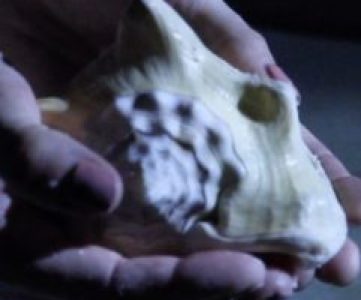TT Journal, ISSUE 5, 20th January 2023
By Lee Nash and Clare Avery
The drive to Saintes takes us an hour. We bypass Pons with its imposing donjon, and climb into the city to park near the river. It’s a five-minute walk to the gallery, past the cathedral and a line of majestic plane trees, and we set off with arms full of oysters. Fifty artists have pooled their talents in response to a call for the group exhibition l’huître novembre, and Clare Avery (aka Mum) is among them. The oil is barely dry on the canvases, so we’re extra careful with the newborns’ delivery.
Melissa, the partner of Romanian-born Cristian (one of the three brothers who co-manage the gallery), welcomes us in. Cristian is busy–as well as representing contemporary art, there are refurbishment projects in progress.
The interior is small, though by no means cramped. Will there be enough wall space for everyone? Will styles and egos clash? The Pacific thorny oyster, black pearl oyster and a bed of common mollusks shimmer and slither on a glossy table. We ask if there will be sand on the floor and edible seafood at the vernissage, as hinted at an earlier visit, but our hostess is not giving anything away before time.
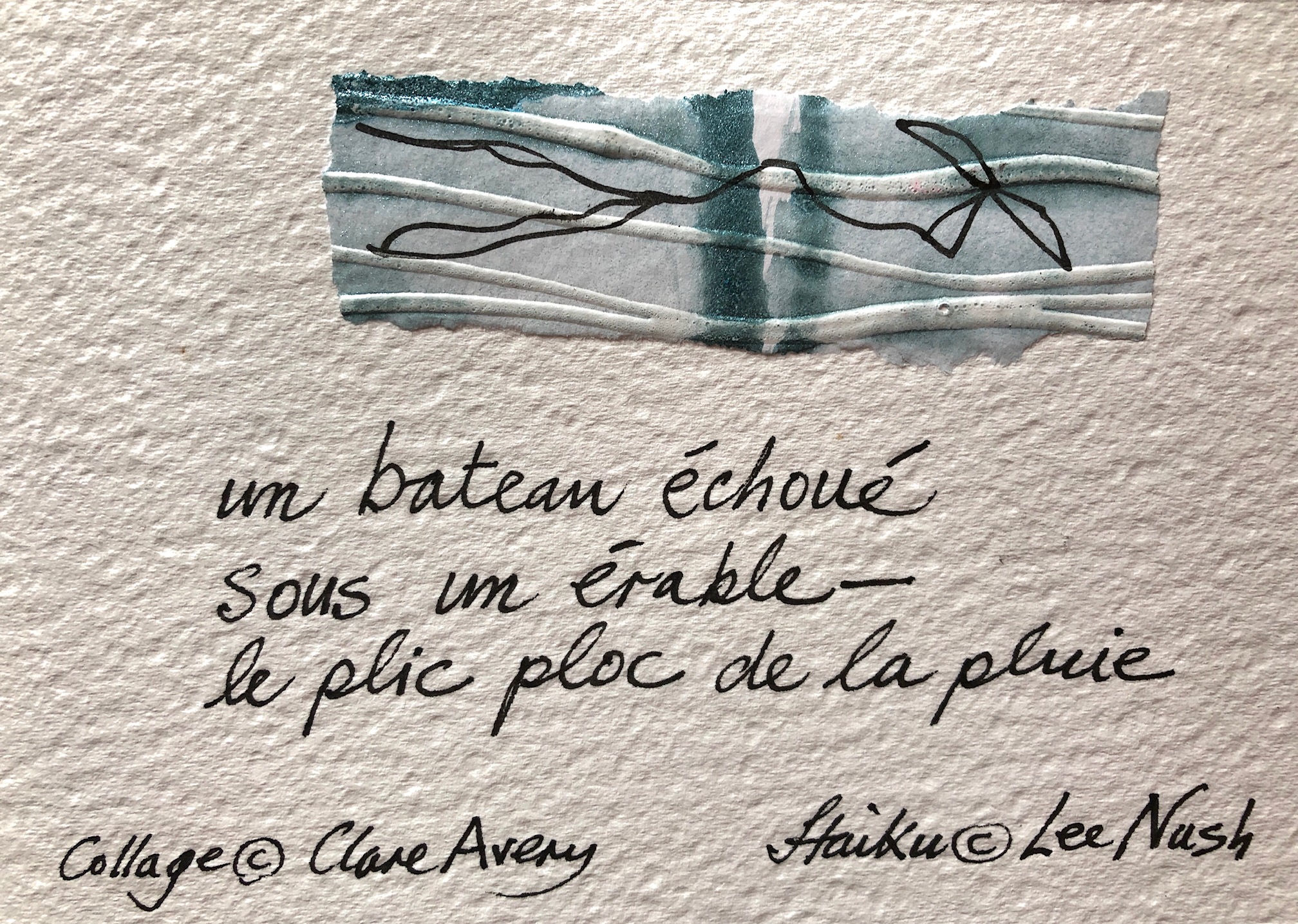
At this point, we offer her the haiga, which she promises to display, perhaps on one of the white plinths. This will be the second opportunity to show our mother-daughter collaboration of original haiku and acrylic hand-painted collage. An extra crate of oysters and a bay scallop join la fête des fruits de mer.
Of the hundreds of haiku I have written over the past decade or so, by happy chance three of them fit the theme; I swiftly conjured up a couple more. As a neophyte, I laboured over composition, analysing the structure and wording and quite possibly editing them to death. Nowadays, the process is intuitive; those initial efforts were certainly not wasted. It’s resonance that I’m looking for, a light flourish that stirs the senses; the trick is not to descend into sentimentality. In an attempt to imbibe this delicate quality, I try to read Japanese haijin; it doesn’t pay to be too ‘heavy’, especially when tackling grief and loss (which seem to be favourite subjects, and again–pardon the pun–done to the proverbial).
I had previously experimented with photo haiku (often called ‘shahai’) but these are ubiquitous; also, having enough to do on-screen with websites and social media, I soon tired of this. It was while rooting through my ‘memory box’ deciding what should go into ‘deep trash’, that I came across all the cards that Clare has faithfully painted for me over the years for birthdays and Christmases. In fact, not only for me but also for her two grandchildren. These acrylic compositions have always fascinated and pleased me with their combinations of colour on torn paper, some with a figurative suggestion but predominantly abstract. Why not marry these forms?
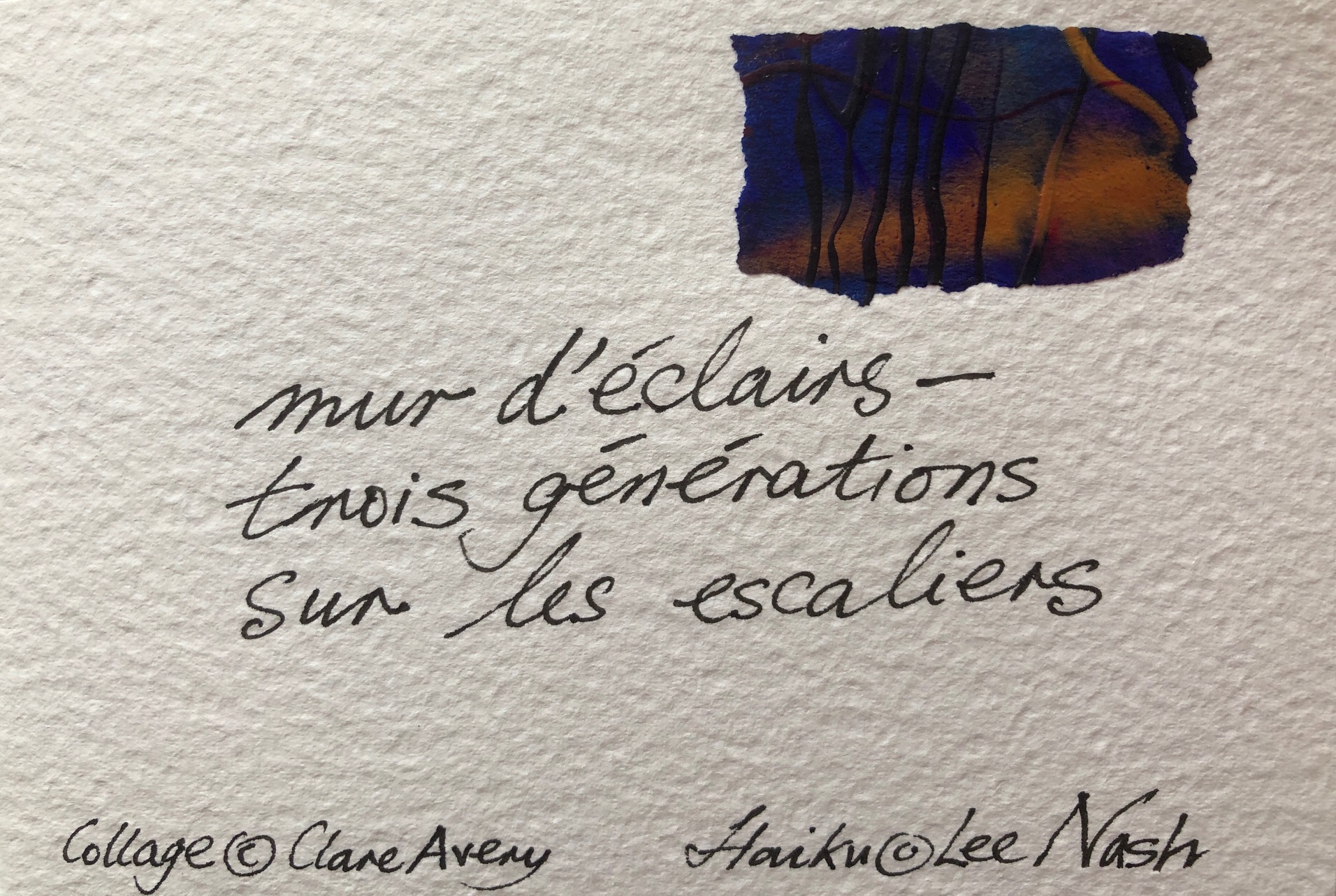
A drop of anxiety fell into my enthusiastic mix. After numerous eventful life journeys, should we attempt a co-creative one? Would the hypersensitive, perfectionist poet and the expansive, chimerical artist cooperate and what would be the resulting dynamic?
It was, as our motto goes, worth a try. The first question was whether to print or write the text by hand. A fairly easy decision: handwriting is engaging and sensory, and we reasoned that Clare’s script was steadier and more confident whereas I would fuss about every dot and stroke. I’d double-check the French translation and mark up an en rule for the ‘kireji’, where this grammatical or rhythmical pause is integral to the poem.
As for the artistic composition, I prefer the minimalist approach with a single acrylic ‘patchwork’ (in Japanese inks) and favour muted tones. Clare enjoys juxtaposing and/or overlapping the fragments and opts for vibrant colours. We’ve compromised and are presenting a range of styles.
#
A Tuesday, it’s also Toussaint (a public holiday in France). Fortunately, there’s a café open in a secluded courtyard, and we order grands crèmes. If we’re attentive to it, inspiration is everywhere. Froth on hot coffee. Spits of rain. What we’re wearing and where it came from (we’re seasoned rummagers). The distressed effect of the stonework, just-discernible letters…a wall of palimpsest. Dreamers, we could wander off into our thoughts and be content with writing mentally or filing away sensations and images for later reference in the studio. Instead, it’s the moment to enjoy and experience being at this stage–relishing new possibilities and contacts and discussing last-minute pre-exhibition plans.
It helps to have a common focus. There’s a channel for our shared curiosity and since we both love to learn, one discipline feeds into the other. I discover vocabulary, like ‘bokeh’ (Clare, also a photographer, is researching options for a macro lens), and brush up my knowledge of artists; Clare is interested in a piece I’ve written for a competition, intrigued by the double acrostic form.
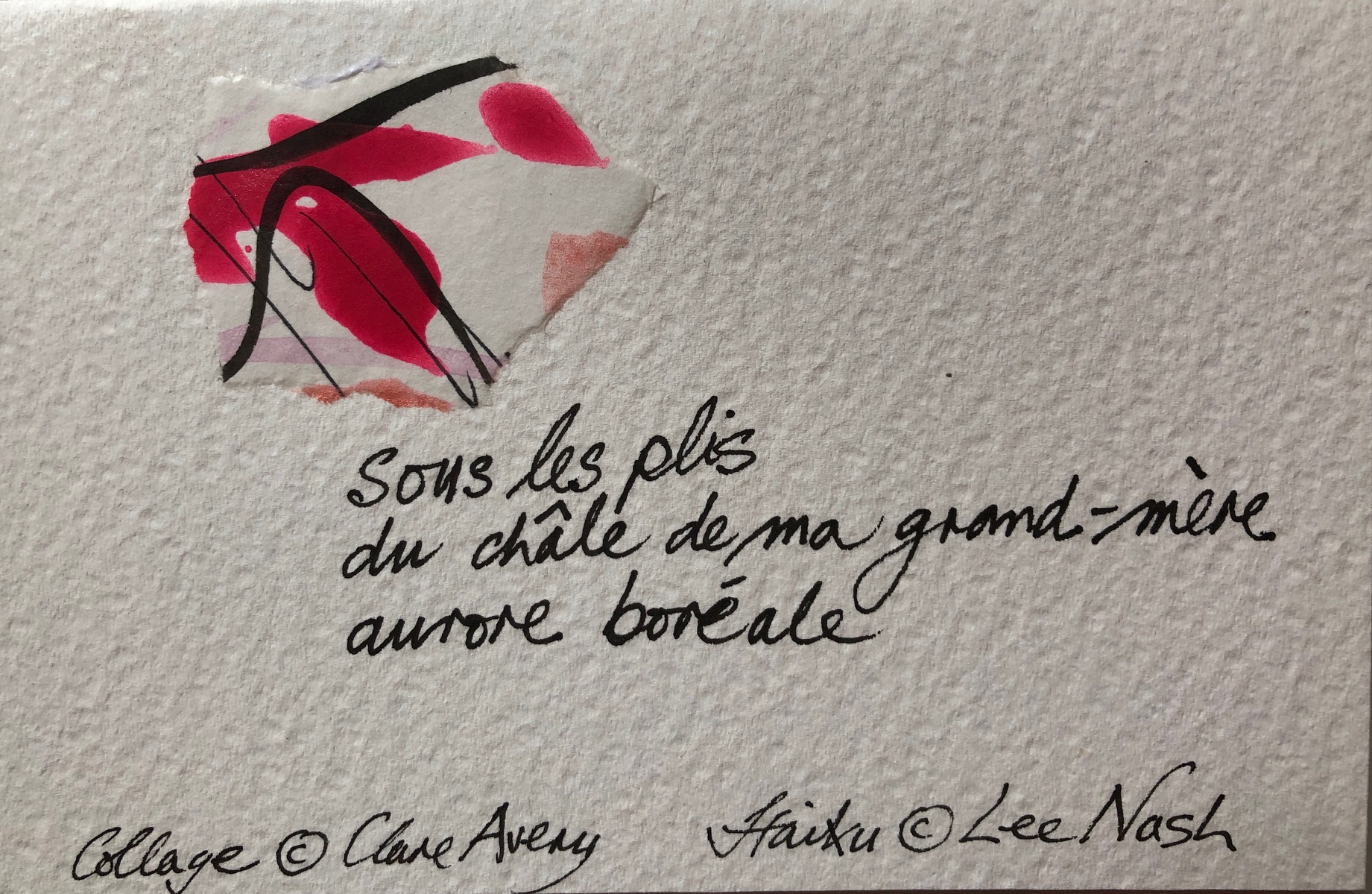
Standing by the wide Charente, watching the steady flow of water, the sense of calm and space is tangible. There’s a lightness and a positive energy: where we once sat and tried to make sense of seemingly endless trials, disappointments and false starts (mostly mine), now both silence and conversation seem easier. Relieved (to a large extent) of single-parent responsibilities, I have the head-space for reflection, increased capacity and freedom to explore tangents, and the patience for esoteric thinkers. I learn that the Sun is at least a second-generation star, probably a third. We share a passion for science and technology, and natural history. Many of Clare’s series’ titles reflect this, for instance, Sastrugi, Germinating Jupiter, Sahara Sands, and Electric Storm. In her own words: ‘As I move forward with my paintings I see certain themes predominate unbidden: thoughts about the weather, the sea, times of the year. The technological advancement in many areas of our lives is fascinating and I like to think that much of what I read filters through into my work.’ There’s a correlation with my poem titles, at random: Galago Moholi (Bushbabies), Collecting the strands of Pele’s hair, Platinum (78), and NEO the vacillating near-Earth object.
#
Once we have finished examining the exquisite wings of a resting moth, we too come down to Earth. Our bodies are adjusting their internal clocks to the time change on Sunday, and we need some sustenance before heading home. The bells ringing out the All Souls mass, the autumn light that crispens Nature, and the taste of honey in homemade flapjacks are sweet comfort.
#
The last word belongs to the artist:
‘When my daughter first approached me with her idea for illustrating her haiku, I was very excited to be able to collaborate on something new and refreshing together. Especially as I have always loved and been inspired by her poetry.
From the beginning, we thought of them as simple A6 gift cards folded in half with just the text and image on the front–a small size relative to the number of words as required by the haiku specifications.
I was then able to delve into my extensive stock of hand-painted coloured collage pieces on paper to use as illustrations. In each card I tried to create an ambiance of colour, tone and texture to be reflective of the subject matter. I used my own handwriting with Artline drawing pens using 300g/m2 Fabriano textured paper.
We decided to keep to the French language for the moment as it’s our main market here where we both live and work.
We have been encouraged by their reception–the French do LOVE words!’
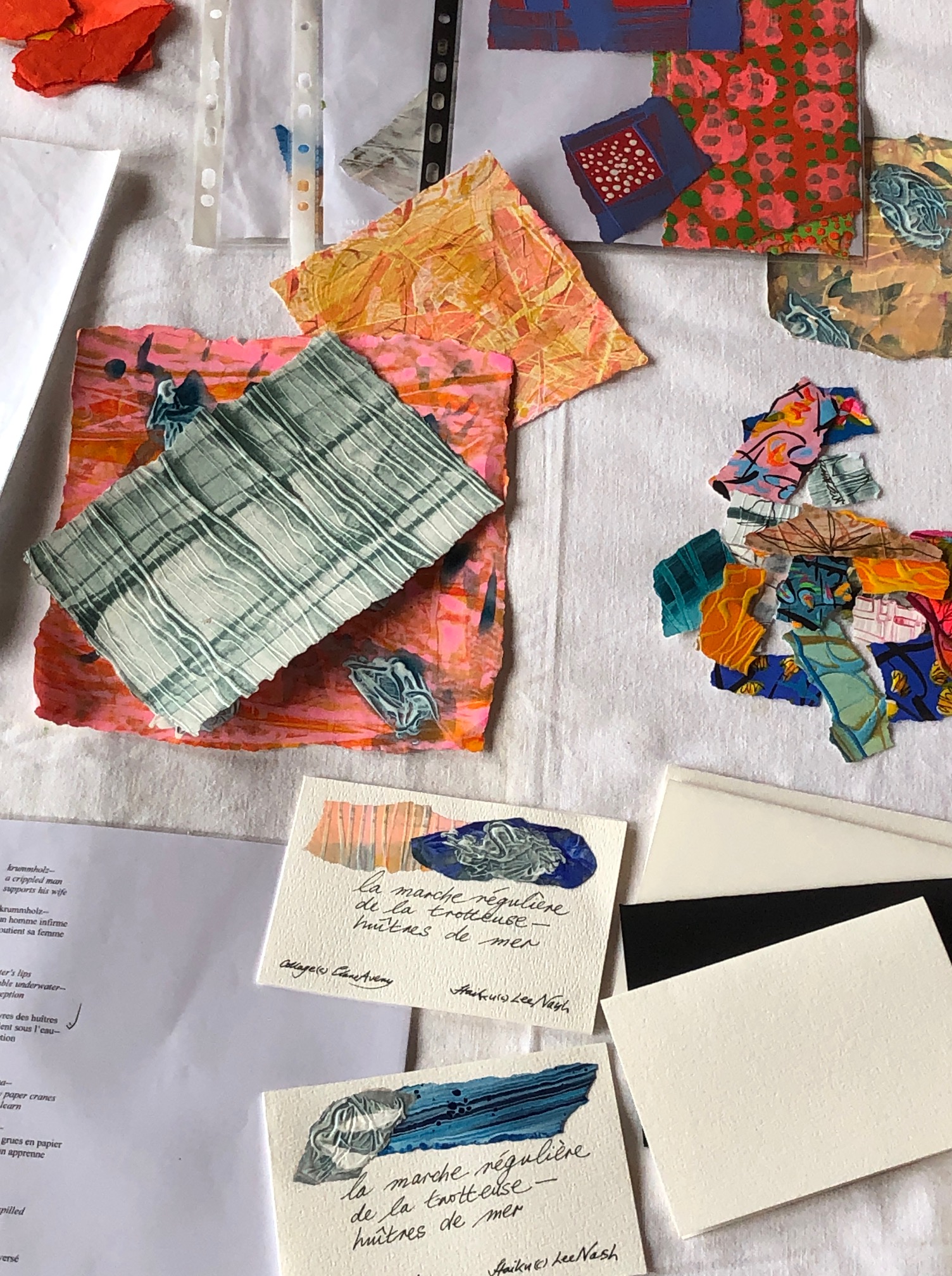
Selected haiku
a queue forms
in the snow–
full crates of oysters
une file d’attente se forme
dans la neige–
caisses pleines d’huîtres
First published in The Asahi Shimbun, Asahi Haikuist Network, 15 December 2017
oyster’s lips
tremble underwater–
conception
les lèvres des huîtres
tremblent sous l’eau–
conception
First published in Modern Haiku, N° 47.3, 2016
bay scallop–
a wide smile
of blue eyes
pétoncle de baie–
un grand sourire
des yeux bleus
muddled mollusk–
though you don’t have a head,
you have a mouth
mollusque embrouillé–
bien que tu n’aies pas de tête,
tu as une bouche
the steady march
of the second hand–
oystercatchers
la marche régulière
de la trotteuse–
huîtriers de mer
END
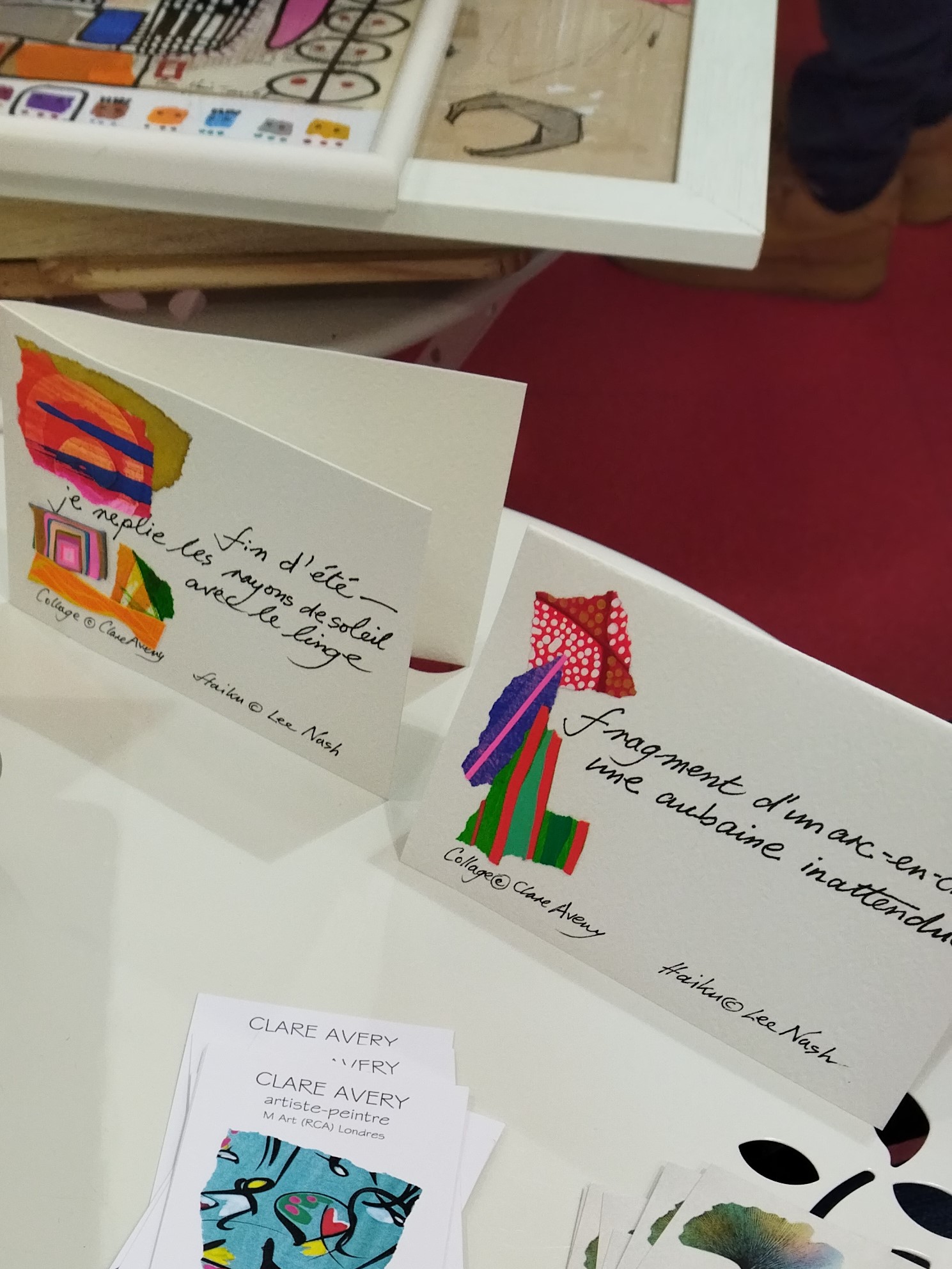
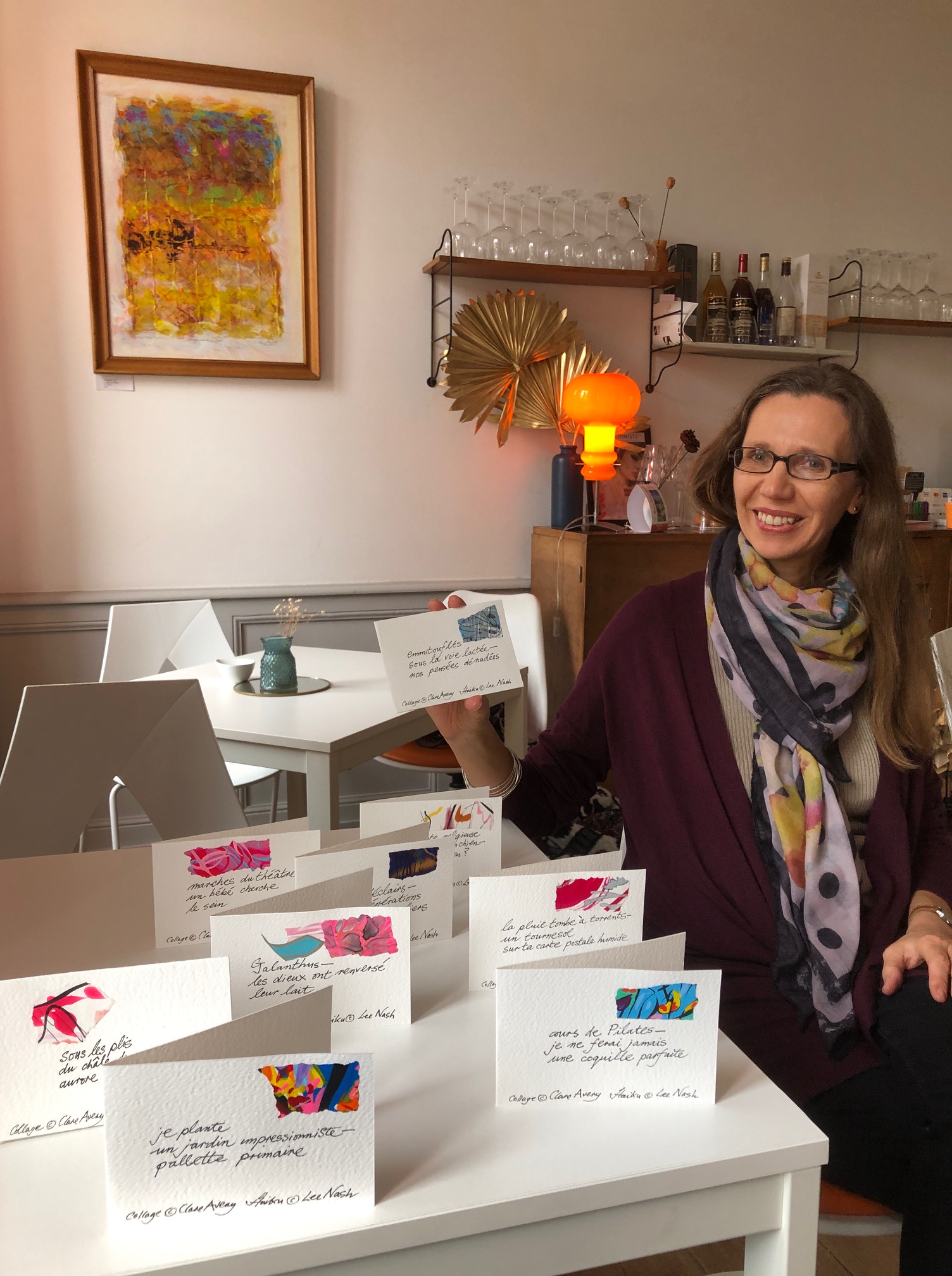
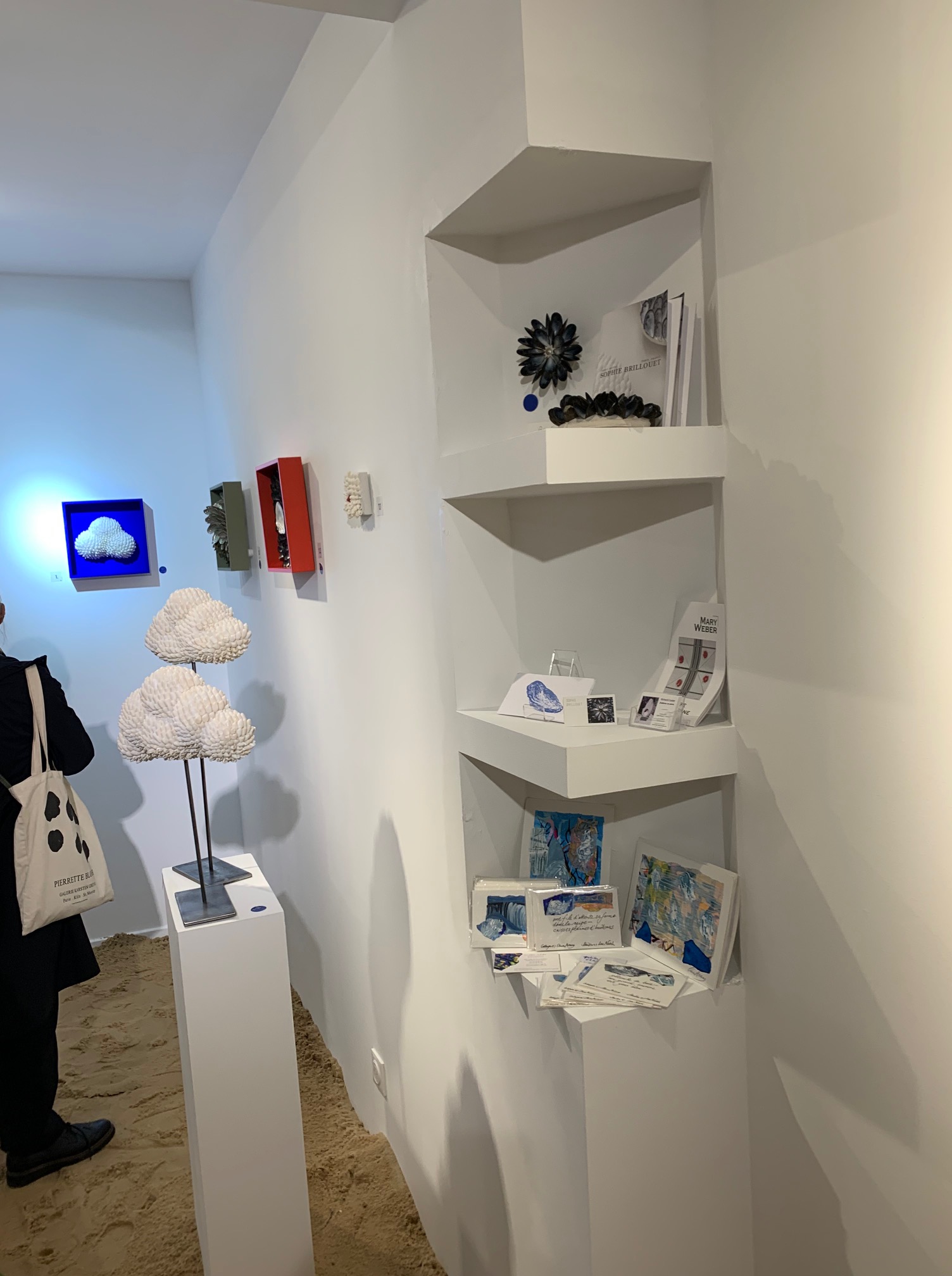
Clare Avery was born in Buckinghamshire, England. She has a Diploma in Art & Design from Brighton Polytechnic and an M.A. from the Royal College of Art, London, where she won a full three-year scholarship. She was a full-time lecturer at Rhodes University (painting, art history and visual communications). In 1997, she moved to France; she now lives and works permanently in the beautiful south Charente region. She has had many local and international exhibitions, both solo and group, and her work may be found in various public and private collections, including FDAC (Fonds départemental d’art contemporain, Dordogne, France). https://clareaveryartist.wixsite.com/clareaveryartist
Lee Nash (she/her) writes poetry, fiction and creative non-fiction; she also takes on translating, proofreading and editing projects. Her work has been featured in diverse journals and anthologies, including Ambit, Fish Publishing, Magma, Slice, Southword and “The Best Small Fictions 2019,” and has won or been placed/shortlisted in international competitions, including the Bath Flash Fiction Award, the TU Dublin Short Story Competition, and the Bridport Prize. Her first poetry chapbook, “Ash Keys,” was published by Flutter Press in 2017. She is an accomplished flautist (B Mus Hons, Anglia Ruskin University, Cambridge, UK). https://leenashwriting.com/
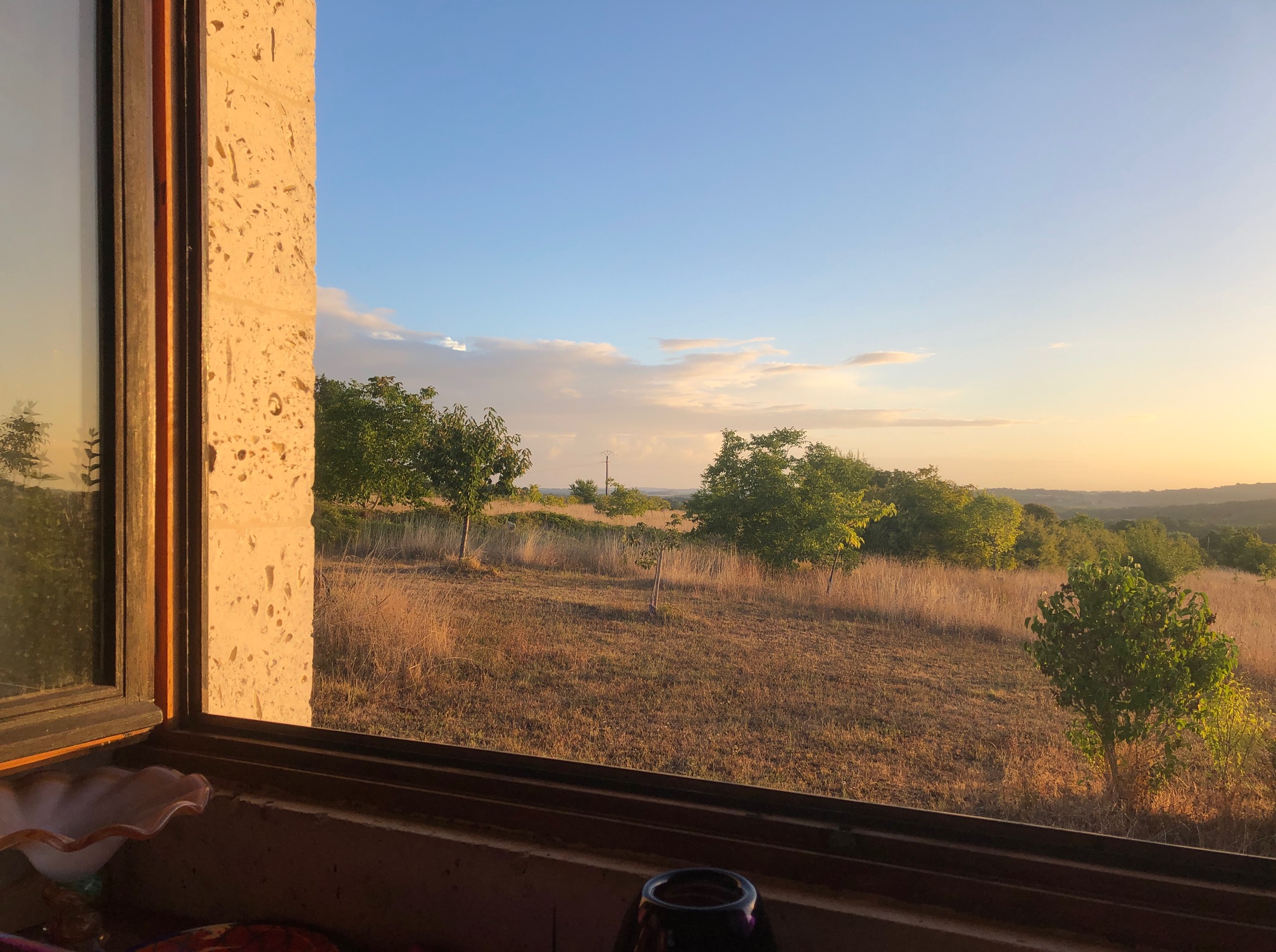
View from Clare’s studio
